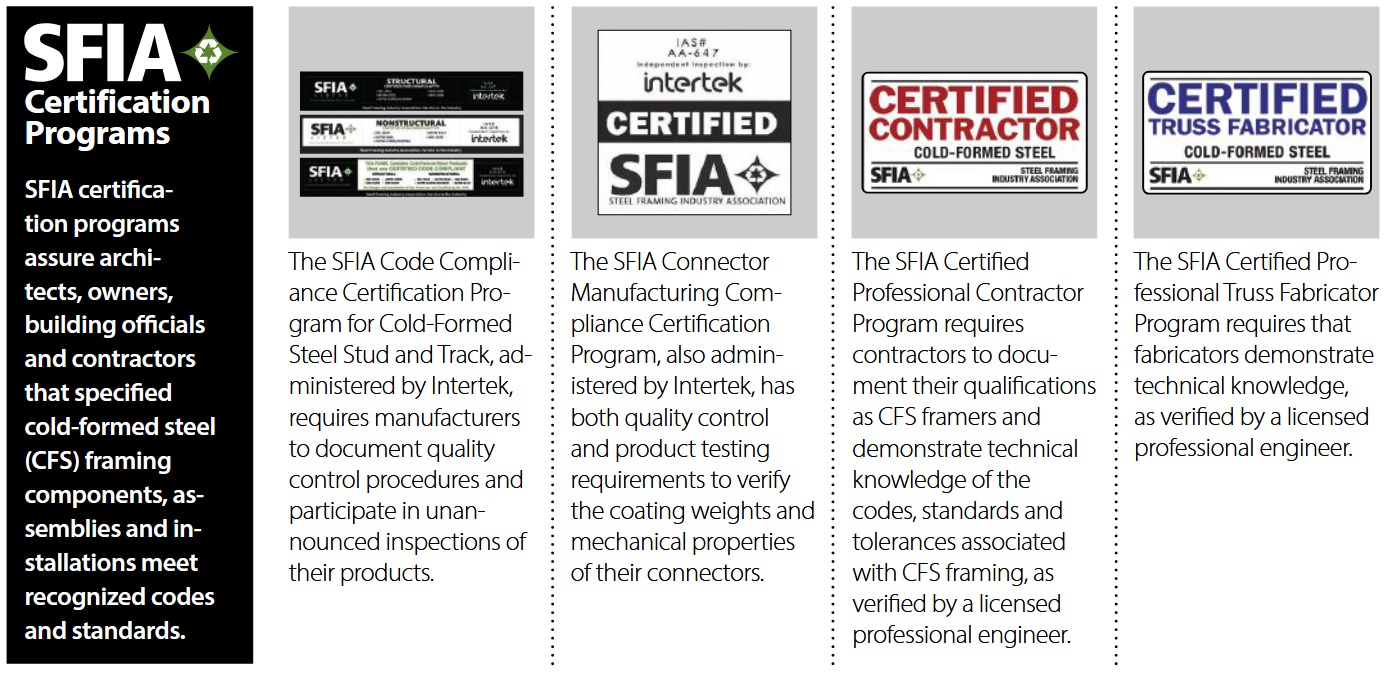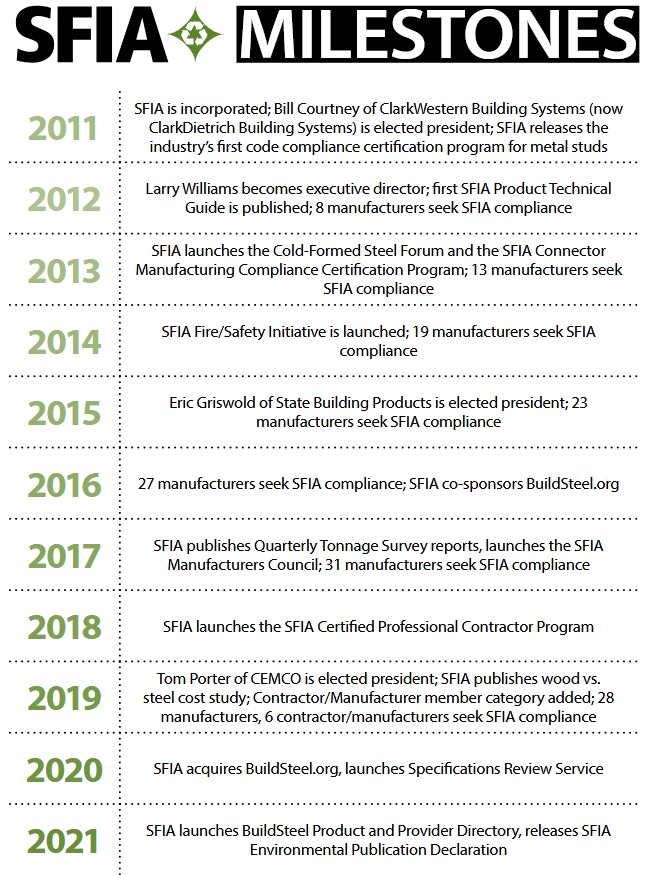Ten years ago, cold-formed steel (CFS) manufacturers produced metal studs with no overriding governing body certifying them. The Steel Framing Industry Association (SFIA) was formed to provide that oversight and give wall contractors the assurance they need that steel studs meet all relevant codes and standards.
As SFIA celebrates its 10-year anniversary in 2021, SFIA has evolved to provide more than just code compliance, but also education, marketing, advocacy and more. This is its remarkable story of leadership.
Industry-Wide Code Compliance
Although metal studs have been in use for more than 100 years, it wasn’t until the 1970s that the industry coalesced. The Metal Lath/Steel Framing Association had formed and so did the Metal Stud Manufacturers Association. In the 1990s, they merged and became the Steel Stud Manufacturers Association.
The American Iron and Steel Institute, attracted by the potential demand for steel framing in residential construction, helped push an industry-wide effort in 1998 to form the Steel Framing Alliance (SFA), an umbrella organization that helped educate the building industry about CFS framing. In 2008, however, the Great Recession led to SFA’s dissolution and created a leadership vacuum in steel framing.
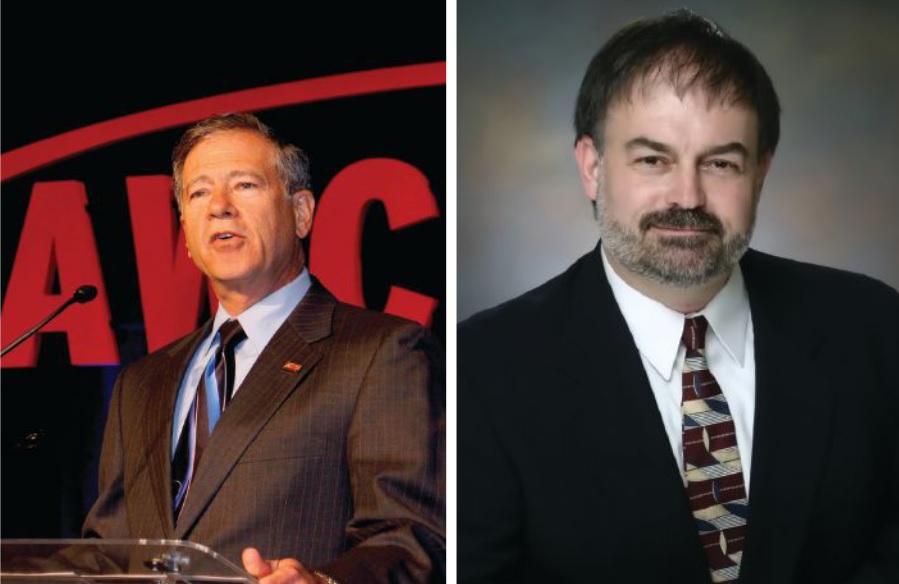
Steven A. Etkin (l), 1995-2019 AWCI executive vice president and CEO, and C. Brent Allen, 2010-2011 AWCI president, did much legwork in the founding of SFIA.
The Association of Wall and Ceiling Industry (AWCI), which had been protecting the interests of framing contractors for a century, was the stable voice at that time. But by 2010, still no industry-wide steel framing certification program was in place.
“This put contractors in jeopardy,” says Steven A. Etkin, then AWCI executive vice president and CEO and now retired. “A manufacturer might say their steel was code compliant, but if someone tested the steel and found it wasn’t, the contractor would be left holding the bag.”
Etkin and the AWCI Executive Committee organized a meeting on January 13, 2010, according to AWCI internal documents. Several CFS framing manufacturers and representative suppliers discussed “an industry-wide code compliance service.” But as the year went on, some manufacturers grew reluctant to support the certification of some new steel stud technology.
“This revolved around the innovation of proprietary framing today know as ‘EQ framing,’” says C. Brent Allen, then AWCI’s Construction Technology Council chairman and later AWCI 2010-2011 president. “EQ” stands for “equivalent” CFS systems, which provide the same levels of performance but with a more efficient use of steel.
In October 2010, at AWCI’s fall conference, AWCI’s leadership took matters into its own hands. “The Executive Committee decided to start a new association that would be all-inclusive of manufacturers, suppliers and contractors, the entire industry, and not just a small subset of manufacturers,’” Allen relates.
The Voice of Steel Framing
Launched in 2016 by a coalition of industry players, BuildSteel.org was acquired by SFIA from the American Iron and Steel Institute in January 2020. Since then, SFIA has grown the site’s users by 42 percent.
In August 2021, BuildSteel.org had 11,700 monthly sessions, 18,200 pageviews and 9,700 users. The BuildSteel Weekly newsletter had 7,000 subscribers.
SFIA and AWCI members Life Drywall Systems, Ronsco, South Valley Drywall and others have garnered increased publicity from BuildSteel coverage of their projects. The BuildSteel Product and Provider Directory, launched in April 2021, has helped industry professionals find steel framing products and services.
Birth of a New Leader
In November 2010, Etkin, Allen and AWCI legal counsel, Don Gregory, began the paperwork to form the new association. SFIA was officially incorporated in January 2011. The founding Board of Directors included SFIA President Bill Courtney of ClarkWestern Building Systems, John Roberts of Dietrich Metal Framing, Ken Navratil of J&B Acoustical and Scott Negwer of Negwer Materials, Ray Frobosilo of Super Stud Building Products and Kennon Whaley of Southeastern Stud & Components.
The first annual meeting of SFIA members was held on April 5, 2011, in Las Vegas. Etkin was SFIA interim executive director. Patrick W. Ford, P.E.,was SFIA technical director and Robert Grupe (now AWCI director of technical services) helped with strategic planning.
Greg Ralph of Dietrich Metal Framing, Randy Daudet of Simpson Strong-Tie and others on the SFIA Compliance Committee played key roles in developing provisions for steel stud and connector certifications. SFIA completed the first-ever, industry-wide, CFS stud certification program in April 2011. AWCI approved it.
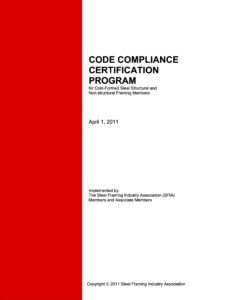
The SFIA Code Compliance Certification Program for structural and non-structural CFS framing members was released in April 2011.
“The Code Compliance Certification Program submitted by the Steel Framing Industry Association meets the endorsement criteria established by the AWCI Board of Directors,” wrote Allen, in a May 18, 2011, letter to Courtney.
“The industry [was] energized,” says Peter Wilhelms of Negwer Materials, an AWCI supplier and then AWCI board member and future SFIA board member, in Celebrating 100 Years of Industry Growth with the Association of the Wall and Ceiling Industry.
In November 2011, the SFIA Bylaws Task Force updated the association’s by-laws to require that stud manufacturer members be certified code compliant. By December 2011, SFIA had 1,000 members.
Advocacy, Promotion, Education
SFIA’s vision has involved more than certification of code compliance.
“There was a vacuum in the industry for an organization that would provide education, promotion, advocacy and more,” says Larry Williams, SFIA executive director since July 2012.
Here are some examples:
Education
In 2012, SFIA launched its first Product Technical Guide. The Cold-Formed Steel Forum was introduced in 2013.
Advocacy
In 2014, SFIA launched its Fire/Safety Initiative to help owners, municipalities and designers understand steel’s non-combustibility benefits.
Promotion
In 2016, SFIA invested in BuildSteel.org, acquiring the property in January 2020.
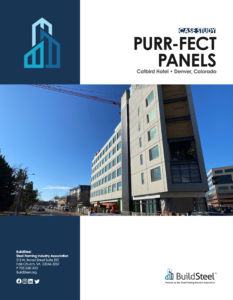
Contractors get a publicity boost from BuildSteel coverage of their projects, such as this profile of South Valley Prefab’s work at Denver’s Catbird Hotel.
Research
In 2017, SFIA published Quarterly Tonnage Survey reports. In 2019, it released a ground-breaking cost study comparing wood vs. steel framing in mid-rise construction.
Certification
The SFIA Manufacturers Council formed in 2017; the SFIA Certified Professional Contractor Program launched in 2018.
Architectural Services
In 2020, SFIA launched the free Specifications Review Service for architects.
Sustainability
SFIA Environmental Publication Declaration was published in May 2021.
Majority of Cold-Formed Steel Studs Now Certified
The industry needed a bona fide certification program to shield contractors from liability, and SFIA’s compliance and QA programs helped develop fairness and unity in the marketplace. Industry players rallied around the new association.
“Today, 82 percent of steel framing manufactured in the U.S. is certified by SFIA,” Williams says.
Clearly, SFIA was born at the right time.
“When you see the amount of cold-formed steel framing being used across North America today versus 10 years ago,” says Travis Vap, president of South Valley Drywall in Colorado, “I believe it’s the direct result of the industry working together through SFIA.”
Article cited by BuildSteel.org

